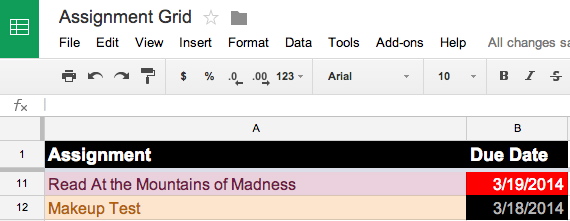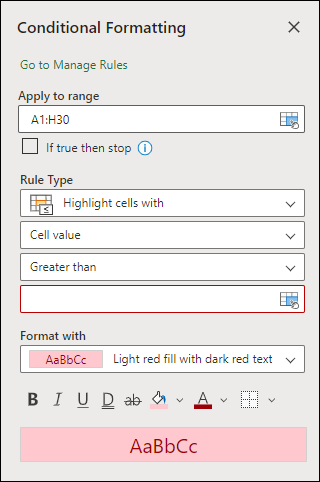

The bars in all the cells adjust accordingly â as with all other conditional formatting, data bars are re-applied after calculation or data refresh, so the user always sees an accurate picture of their data set. You can see how this works when I change the first two cells to have higher values (19k and 15k respectively): By default, when you apply data bars with one click, Excel uses the highest and the lowest value in the range to draw the shortest and longest bar. This bar provides a clear visual cue for users, making it easy to pick out larger and smaller values in a range. So whatâs going on here? Excel is comparing the values in each of the selected cells, and drawing a data bar in each cell representing the value of that cell relative to the other cells in the selected range. ¦ which makes it pretty easy to see the large and small numbers (note â I have kept the sample range small for illustrative purposes ⦠the bigger the range, the more data bars help). If you select that range and apply data bars, the range now looks like this: Say, for example, that you had this range of data, and you wanted to make it easy to spot the large numbers and small numbers: In the case of data bars, the specific goal was to allow a user to select a range of cells and with one click apply a conditional format that makes it easy to see the value of a cell relative to all other cells that have been selected. As I mentioned above, we wanted to provide users with great new data visualization tools so that users could scan and quickly comprehend large quantities of information â see outliers, spot trends, compare values, etc.

For the rest of this post, letâs explore one of the new visualizations â data bars. Over the next week or two, I am going to review this work in detail.

We also wanted our new visualizations to be useful for annotation and presentation purposes. We wanted to provide users with new visualizations for the purposes of exploring large data sets, identifying trends and exceptions, and quickly comparing data. We wanted users to be able to set up conditions like âtop 10%â and âduplicatesâ with just one click. Make more possible without needing to write formulas.

We wanted to make it much easier for users to find the feature, to add conditional formats to their work, and to remove them too. In our research and planning for Excel 12, it became clear that there was still a lot of additional capability that we could add in this area that would benefit all sorts of users, so we set out to really improve the feature in a number of ways.
#Conditional formatting definition technology how to#
Users that know about the feature love it, and many book chapters and articles and web pages have been written on how to do all sorts of creative things with the feature. It is also a powerful feature, given that conditions can be based on any Excel formula. This is a handy feature, making it easy to highlight certain values (âall test scores below 50% turn redâ), or make particular cells easy to identify (âall the tasks assigned to Dave turn greenâ). Conditional Formatting is a feature that allows users to apply formatting to cell(s) automatically depending on the value of the cell or the value of a formula.


 0 kommentar(er)
0 kommentar(er)
